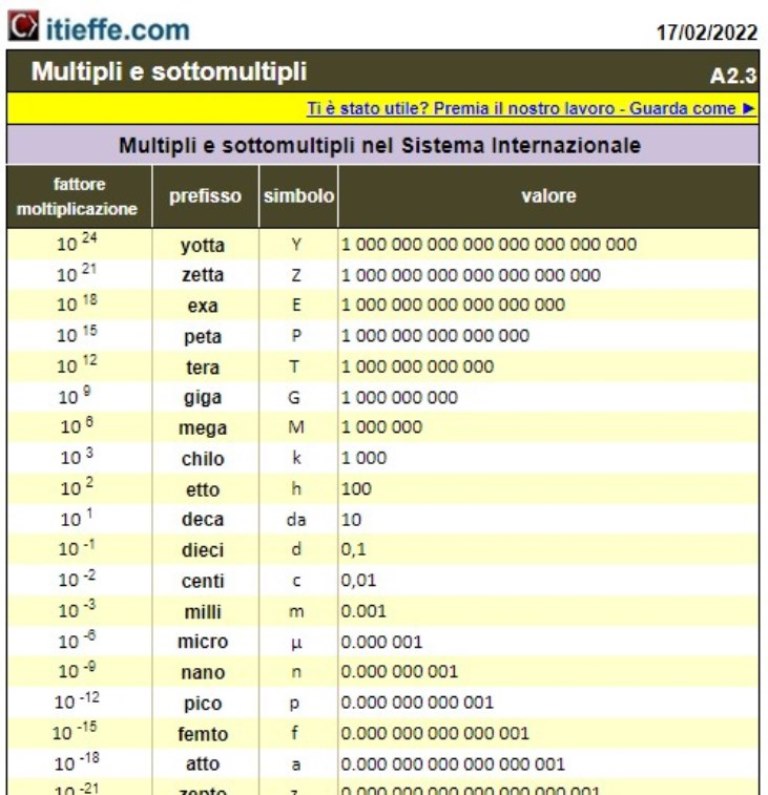Multiples and submultiples

Units of measurement, multiples and submultiples
Multiples and submultiples are fundamental concepts used to represent units of measurement in various scientific and technological disciplines. These concepts allow quantities to be expressed in terms of values larger or smaller than the basic units, making it more convenient to represent and understand very large or very small quantities. Here's how they work:
- Multiple: Multiples are units of measurement that represent larger quantities than the base unit. These multiples are usually obtained by multiplying the base unit by an integer. For example, in the metric system, the base unit for length is the meter. Common multiples of the meter include:
- The kilometer (km), which is 1000 meters (1 km = 1000 m).
- The decameter (dam), which is 10 meters (1 dam = 10 m).
- The hectometer (hm), which is 100 meters (1 hm = 100 m).
Multiples are used to measure longer lengths, such as distances between cities or towns.
- Submultiples: Submultiples are units of measurement that represent smaller quantities than the base unit. These submultiples are obtained by dividing the base unit by a decimal number. Again using the example of the meter as the base unit, some common submultiples include:
- The centimeter (cm), which is 1/100 of a meter (1 cm = 0,01 m).
- The millimeter (mm), which is 1/1000 of a meter (1 mm = 0,001 m).
Submultiples are used to measure smaller lengths, such as the thickness of a sheet of paper or the width of a hair.
This concept of multiples and submultiples also applies to other physical quantities such as mass, time, temperature, and so on, and is especially useful when working with extremely large or extremely small quantities. This greatly simplifies the representation and communication of measurements in different scientific and technological disciplines.
Multiples and submultiples
On the occasion of the 11th Conférence Générale des Poids et Mésures (CGPM) of 1960, the first series of prefixes and symbols of the multiples and decimal submultiples of the units of the International System was adopted.
Other free programs of the same kind offered by itieffe ▼
Multiples and submultiples
The program below is free to use.
To access the reserved version (see below), full page and without advertising, you must be registered.
You can register now by clicking HERE
